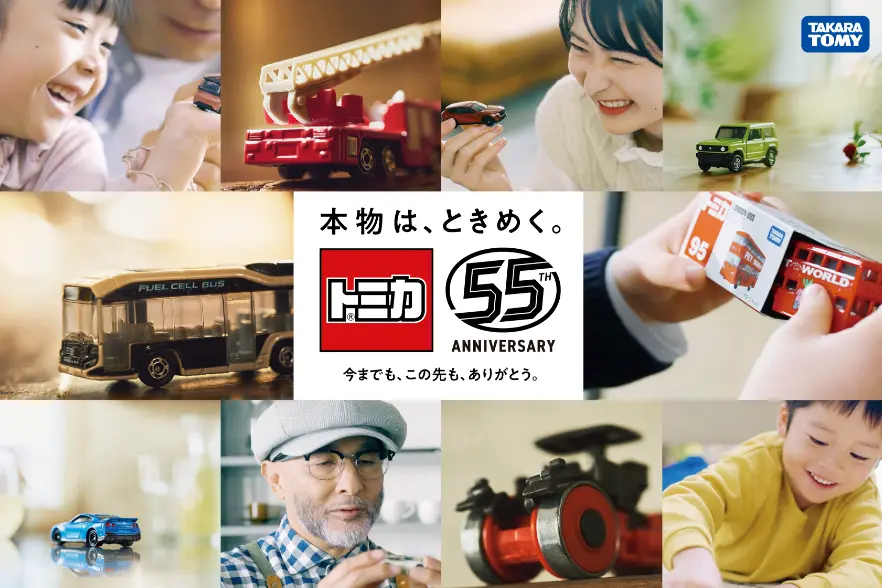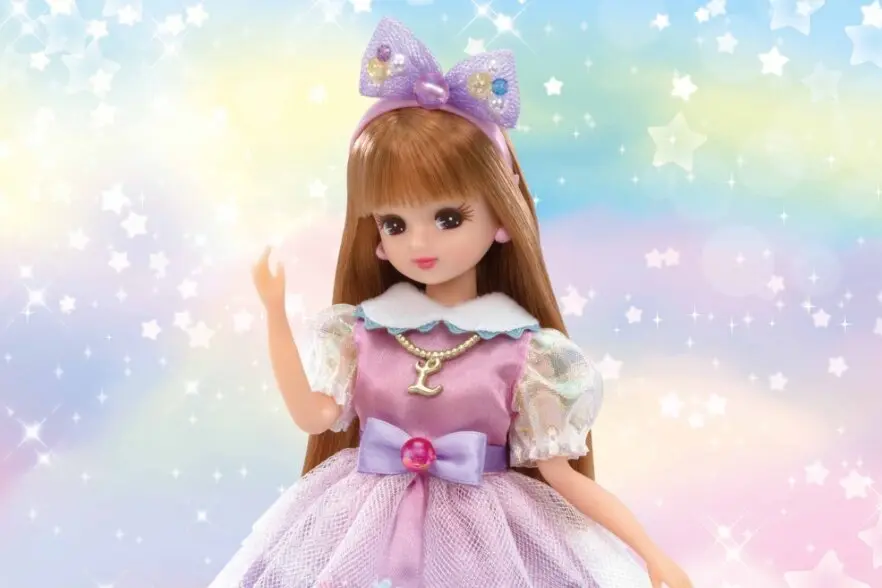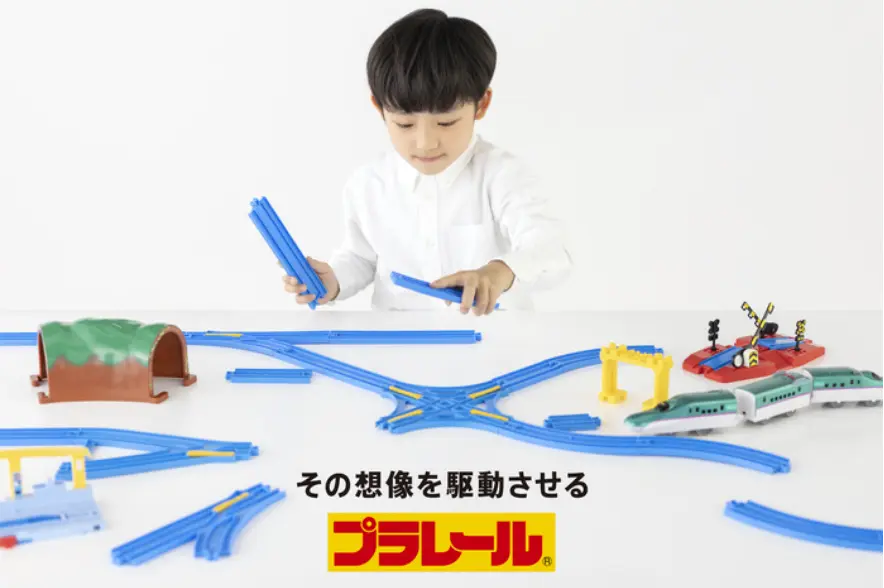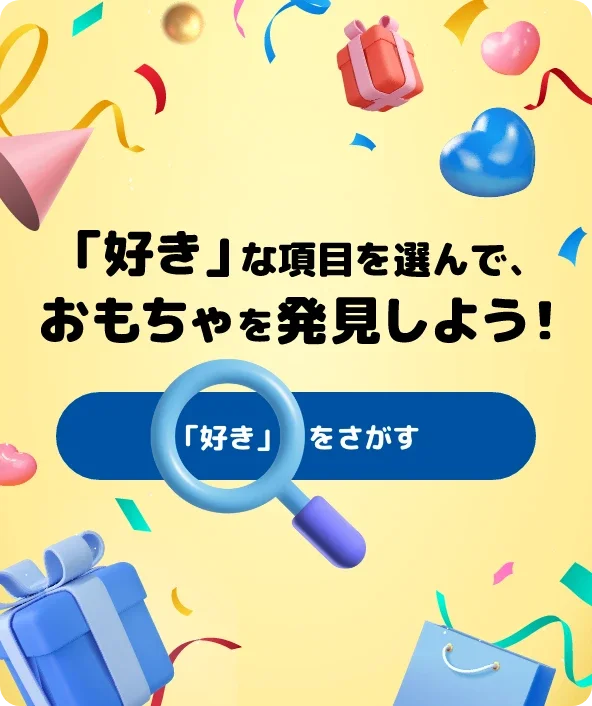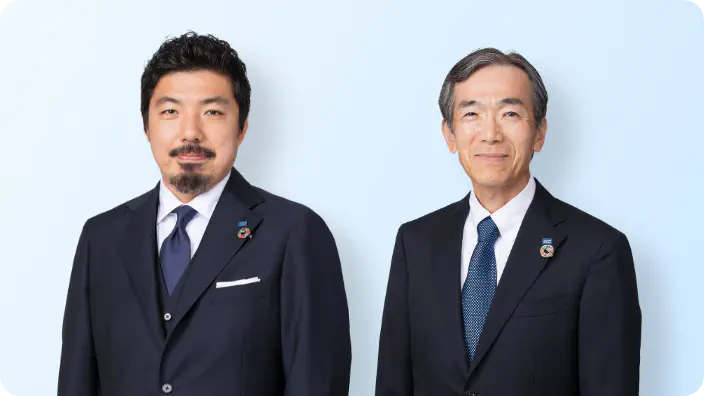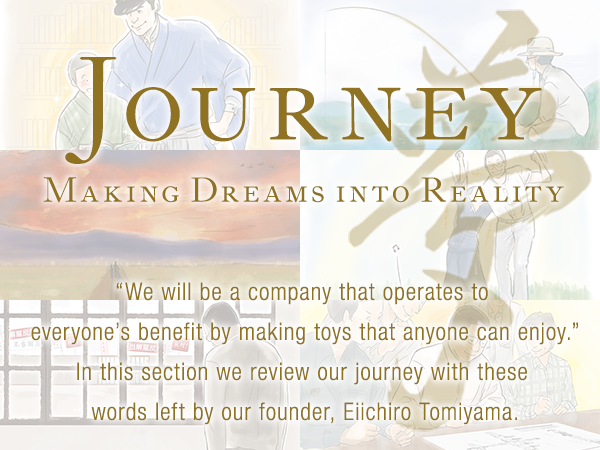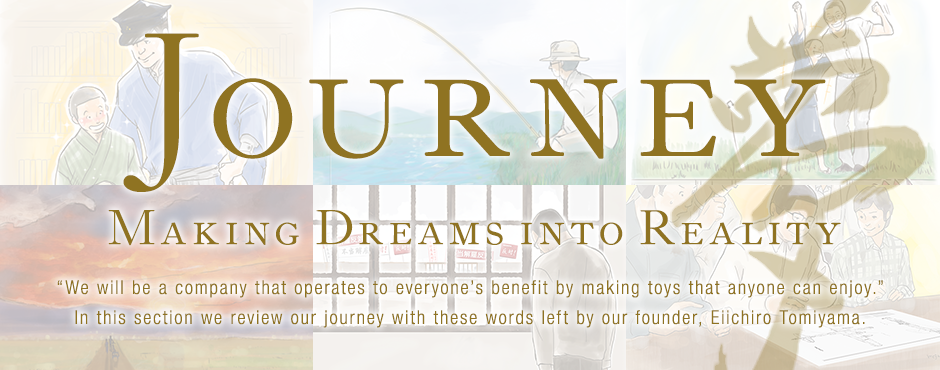Chapter 1Lofty Ambitions
1902-1924
Starting Out at Age Nine
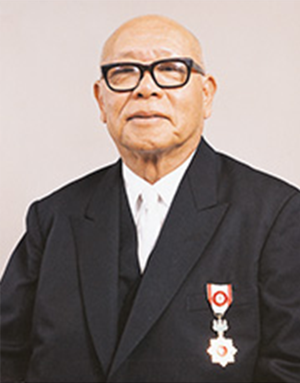
Eiichiro Tomiyama (childhood name: Eijiro) was born on December 14, 1902, in Yoshikawa Town, Kitakatsushika County, Saitama Prefecture, the eldest son of Teijiro Tomiyama, a general merchandise wholesaler.
At the time of his birth, the Tomiyama family had grown prosperous. Not satisfied with the family business of the general merchandise wholesaler, his father, Teijiro, had expanded into the rice market and other areas, steadily expanding the families financial assets. They were one of the wealthiest local merchant families, with three storehouses, employing a large number of sales clerks and maids.
The Russo-Japanese War broke out in February 1904. Despite ending in victory for Japan the following year, the toll on the nation’s strength was unexpectedly harsh, and when the stock market crashed in 1907, Japan entered a post-war depression.
In this unstable environment, clouds appeared over Teijiro’s business acumen as well.
Just as a single stumble causes an unavoidable fall, Teijiro fell into gambling, dreaming of restoring his fortune at a single stroke. This ultimately ruined him to the point where he was forced to give up his house, storehouses, and land.
Eiichiro’s life changed from one of silver spoons to one of sheltering from the rain in a modified barn that had been almost like a tool shed.
His father wandered off, leaving home with no indication of when he might return, and his mother, Kane, now worked instead, sewing kimonos to earn money to keep them fed from day to day.
Even so, his mother never uttered a word of resentment against his father, and supported by her tremendous love, Eiichiro grew into a healthy and kindhearted youth, never once catching a cold despite the family being so poor that it could barely afford food.
However, Eiichiro’s modest life was to be visited by further tragedy.
To settle his gambling debts, his father Teijiro sold the barn where they lived along with the only remaining land that he owned.
With nowhere left to go, his mother and little younger brother moved to her relatives’ house, while Eiichiro was sent out at the age of nine to an apprenticeship.
It was the spring following his second year of elementary school.
Meeting at Kaneko Seihonsho
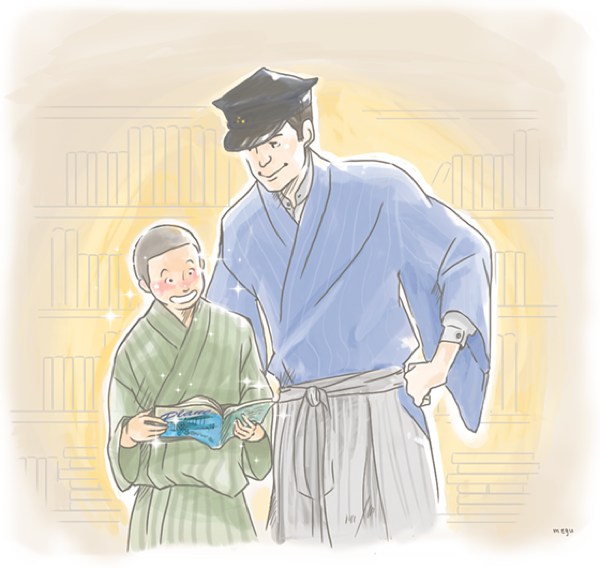
Eiichiro’s apprenticeship was at Kaneko Seihonsho, a book bindery in Tokyo’s Nihonbashi district. The book bindery carried out subcontracting work for the major publishing company Hakubunkan. Eiichiro mainly carried out general duties, such as carrying paper, cleaning, and running errands. The innocent Eiichiro was watched over by an empathetic law student from the Imperial University named Eitaro Ogawa, who shared a room with him.
Eiichiro’s meeting with the young student was to have an enormous impact on his life.
Eiichiro worked at the book bindery from early in the morning until late at night, sometimes until one or two o’clock in the morning. Sometimes he even fell asleep standing up. It was a very hard life for a young boy of nine.
However, no matter how busy they were at work, Ogawa would rise at 4 a.m. every morning and never missed his studies for becoming a lawyer.
The young Eiichiro was inspired by his dedication and followed suit,
rising at 5 a.m. each day to study from his old elementary school textbook.
Ogawa taught Eiichiro English and the pleasure of reading, along with the joy of learning.
Eiichiro was quick to absorb new information, and soon became familiar with the English that Ogawa taught him. By reading various books, he developed a curiosity to encounter new things.
On their days off, Ogawa took Eiichiro to Maruzen, a famous book store in Nihonbashi, and to the secondhand bookshop quarter in Kanda.
When he saw his first foreign photogravure magazine, young Eiichiro saw strange things that he had never seen before printed in natural color. He spent many hours looking at the magazine, never growing tired of it, and captivated by the thought that someday he would travel overseas and see many strange sights.
However, the more new knowledge he gained the more Eiichiro began to question continuing his career path to become a book binder.
At the tender age of 11, Eiichiro seriously set his mind on his future, deciding that he wanted to work in manufacturing.
Encountering Toys
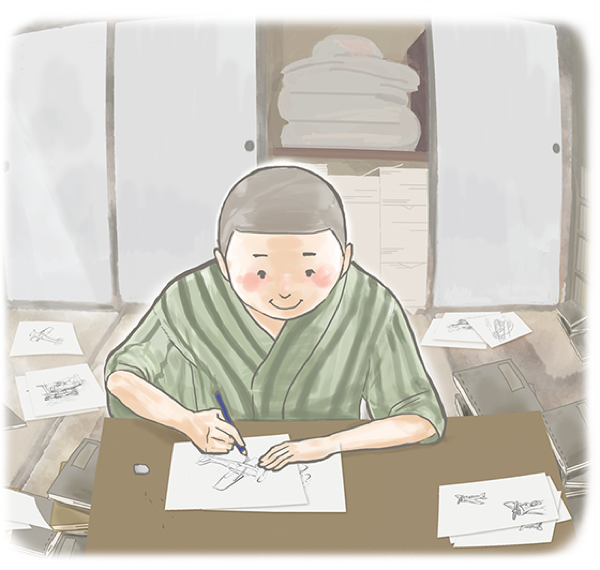
Just about one kilometer from Tokyo’s Ueno district, in Matsuba Town, Asakusa Ward, (currently Matsugaya, Taito Ward), was Eiichiro’s new employer, the Kawano Toy Seisakusho.
Under the guidance of the young owner, 27 year old Kakuzo Kawano (later changed to Kouzo), Eiichiro became more and more attracted by the appeal of manufacturing.
Eiichiro had a well-developed physique for an 11 year old, and was ordered to operate a foot press machine known as ketobashi.
When the metal press applied pressure to a tin plate, various shapes could be formed instantly. Eiichiro couldn’t help but be impressed with the limitless potential for producing all kinds of things each time he operated the foot press. Despite being thoroughly worn out with his work, with shifts sometimes running for 15 hours from 6 a.m. to 9 p.m., Eiichiro always rose at 5 a.m. every day to look at an overseas magazine, never growing tired of it.
When he left his job at Kaneko Seihonsho, Eitaro Ogawa, who had given him the magazine as a parting gift, said “You have to start looking beyond toys at the wider world now.” These words and the magazine became Eiichiro’s precious treasures.
Twice a month he had a day off, on the 15th and the end of the month. On these days, Eiichiro would disregard the other apprentices who went to play at the nearby Hanayashiki amusement park, always preferring to visit Maruzen in Nihonbashi or to the secondhand bookshop quarter in Kanda.
At the bookshop, he would lose track of time gazing at overseas magazines and etch into his mind the images of airplanes, cars, ships, trains and other items with the potential to become toys. Then, he would return to his room and go over the details by drawing them. This time was one of irreplaceable happiness in Eiichiro’s life.
The toy materials he drew in this way were eventually became so many that at one point they would no longer fit in the closet.
From around this time, Eiichiro began to find a little time at the factory after finishing his day’s work to steadily put the ideas of toys he had designed in his head into physical form.
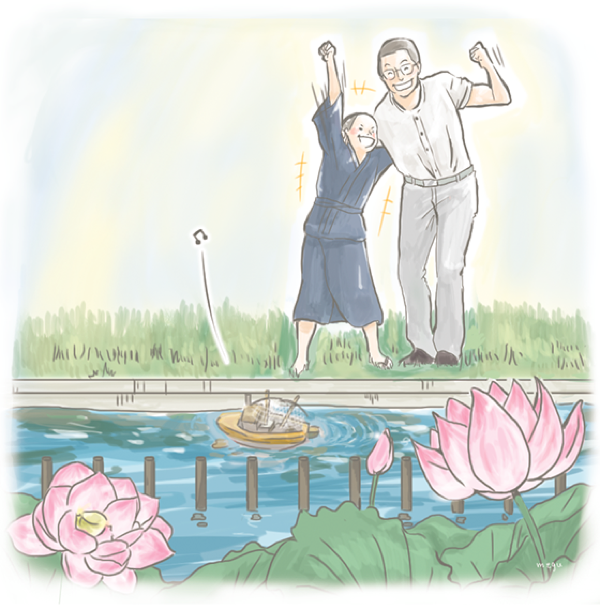
Mr. Kawano, the factory owner, took good care of Eiichiro, and secretly considered him to be very talented.
When Eiichiro was 12, Mr. Kawano approached him about the possibility of creating a pop-pop boat that could actually propel itself.
Eiichiro had been inspired by a German steamship that had featured in a magazine. Making countless prototypes, and working through many sleepless nights, he finally succeeded in completing a prototype of an alcohol-fueled tin boat with a brass-brazed hot bulb. When Mr. Kawano and Eiichiro saw the boat zipping across Shinobazunoike pond in Ueno Park, making a pleasant sound, they momentarily forgot their master and apprentice relationship, slapping each other on the back and shouting for joy.
In that moment, the joy of creating something through strenuous effort and the importance of development were impressed deeply into Eiichiro’s mind.
His passion for toy making extended beyond toys to improving the machinery used for producing them.
As everything was for the sake of creating better toys, Eiichiro also found the work of creating more efficient equipment and processes as exciting as toy making itself.
This way of thinking was later to lead to the unprecedented step of building a new factory just for making toys.
The equipment and processes that Eiichiro conceived were rational, and were much talked about among other industry players, who soon copied them. As Mr. Kawano grew fretful, Eiichiro smiled and said to him “if everyone’s processes improve, not only ourselves, it will enable them to create lots of far better toys. I am happy with that.”
Becoming the King of Toys
By the age of 16, Eiichiro had grown to the point where he could manage the factory instead of his master, Mr. Kawano.
One day, when he was attending a meeting on behalf of Mr. Kawano, Eiichiro was asked about the future direction of the toy industry. He spoke passionately, saying that more than other types of toy, tin toys are required for constantly creating something new by improving designs and devices, and this meant that it was necessary to take a wider perspective and look outside of Japan, asserting that in order to become the king of the toy industry someday, he himself would have to keep an eye on global trends.
King of the toy industry…, only five years after starting his apprenticeship, Eiichiro’s horizons had widened to include a great and tremendous dream beyond anything he could have imagined.
On April 1, 1923, having finished his apprenticeship, Eiichiro began to work as a craftsman at Kawano Toy Seisakusho.
He saved most of his monthly salary of 70 yen, aiming to build up enough funds to start out on his own.
After only five months, having just started his new life as a craftsman, Eiichiro experienced a day that no one in Japan would ever forget.
On September 1 at 11:58, lunchtime, the Great Kanto Earthquake struck, turning all around the Tokyo into a sea of fire in an instant. The damage was immense: 370,000 homes were incinerated or completely or partially destroyed, and over 105,000 people were left dead or missing.
The damage was focused mainly around Tokyo Shitamachi area, making recovery extremely difficult for the toymakers who had concentrated their factories there.
Wholesalers who moved quickly to restart their operations from makeshift offices were able to handle only wooden toys—it took more than two months before metal toys became available again.
The Kawano Toy Seisakusho, which had fortunately been spared in the earthquake, was swamped with orders, and Eiichiro and his colleagues were run off their feet every day trying to keep up.
But in the midst of all this activity, Eiichiro was thinking constantly about how to raise more money to start his own business—his own efforts at procuring funds having not been as fruitful as he had hoped.
Eiichiro’s efforts were noticed by his father-in-law, Kaneyoshi Ishii, who offered to assist him financially in the winter near the end of that year. Eiichiro’s dream took a big step towards becoming a reality.
In the new year, on February 2, 1924, all the preparations were made and the Tomiyama Toy Seisakusho was established with a capital of 1,000 yen.
It was the winter of Eiichiro’s 21st year.

